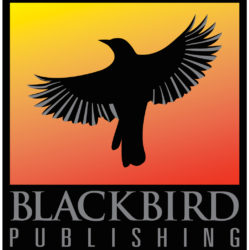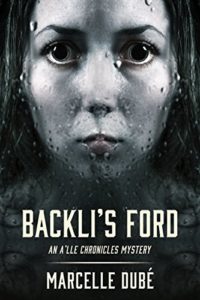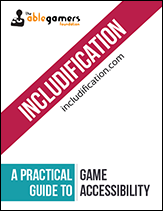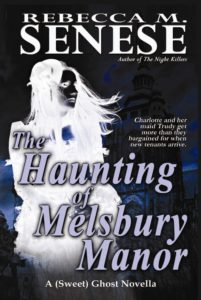Meet Marcelle!
Marcelle Dubé loves speculative fiction and mysteries. In Backli’s Ford, she has created a fascinating alternate history with strong characters, an unusual situation and an alien species stranded on Earth.
Backli’s Ford
In the early 1700s, an A’lle generation ship crashed in the woods of Lower Canada. Survivors stumbled out of the wreckage to find French settlers working the land. While many of the colonists sheltered the injured A’lle, some reacted with fear and loathing. Two centuries later, nothing much has changed.
This is the world Constance A’lle, first A’lle investigator for Lower Canada, must deal with when she investigates the beating death of an A’lle boy in the small village of Backli’s Ford.
Set in 1911, Backli’s Ford follows Constance as she survives an ambush that would have killed a human, fights prejudice in the constabulary, and discovers a terrible secret that risks destroying the delicate balance that has endured for two centuries between A’lle and humans.
Backli’s Ford is the first book in Marcelle’s A’lle Chronicles Mysteries.
The Interview
The fear and discrimination the A’lle face from the humans in Backli’s Ford has parallels to many situations throughout human history where people are faced with someone or something that is ‘different.’ What inspired you to create a world in which an alien race is forced to live among humans, many of whom are not at all welcoming?
It wasn’t intentional. I’m a premise writer – what would happen if…? That’s what happened here. I found myself wondering what would have happened if aliens had crash-landed in Canada when the settlers were setting up a colony? The rest – the prejudice, fear and hatred… and the understanding, compassion and acceptance – well, they came from knowing human nature.
The A’lle Chronicles begin in the early 1700s in Lower Canada. Why did you choose to set the story in this time and place?
I’ve always been fascinated by the early days of Canada. My own ancestors came to Canada from France in the mid-1660s and had to build a life for themselves from practically nothing. It was brutally hard work and the colonists had to help each other if they were to survive. Additionally, the Catholic Church had an overbearing presence in the colony, a presence that ruled the colonists with an iron fist. So, I found myself wondering what would have happened to the colonists–and the Church – if aliens had suddenly appeared? How would people have reacted? And then I wondered what ongoing effect these aliens would have in a society that had to deal with their arrival – assuming the colonists didn’t kill them on sight… Backli’s Ford is actually set in 1911, two hundred years after the A’lle crash landed – plenty of time for adaptation to occur, and biases to develop.
You’ve written many wonderful mysteries, including the Mendenhall Mystery series. What do you enjoy most about writing mysteries?
Figuring out whodunit and why. I never know the answers when I’m starting out. I write to find out. There’s something satisfying about starting from a point of chaos – the murder or crime – and ending with chaos set right. Or right-er.
When does the next book in the A’lle Chronicles come out, and can you give us a sneak peek as to what it’s about?
Plague Year, Book 2 of the A’lle Chronicles, is due out in spring 2018. In this one, Constance A’lle’s sister Gemma comes to Montreal to study nursing, much to Constance’s dismay. This is a dangerous time for the A’lle, especially in Montreal where A’lle have been disappearing, only to be found later, dead. The conspiracy Constance and Chief Investigator Desautel discovered in Backli’s Ford now takes an even more sinister turn, a situation worsened by the emergence of plague in the city.
“The Man in the Mask” is an A’lle Chronicles short story set in the Klondike area of Yukon territory. How does this story tie in with Backli’s Ford, and what made you decide to set it in the Yukon?
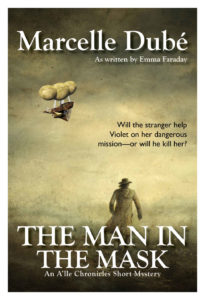 I loved the idea that someone would have come searching for the lost A’lle, only to end up as a refugee, too, but at the other end of the country. I live in the Yukon, so it was natural to choose the territory for a dramatic setting. To my surprise, the story ended up with a steampunk flavor (It has airships! In the Yukon!) and a “pulp” feel.
I loved the idea that someone would have come searching for the lost A’lle, only to end up as a refugee, too, but at the other end of the country. I live in the Yukon, so it was natural to choose the territory for a dramatic setting. To my surprise, the story ended up with a steampunk flavor (It has airships! In the Yukon!) and a “pulp” feel.
What story (or stories) are you working on now, and what’s fun about writing it/them?
I’ve just finished the fifth in my Mendenhall Mystery series, featuring Mendenhall Chief of Police Kate Williams. I love Kate and her intrepid constables. Kate is smart and capable, and she has a good sense of humor, which helps with some of the situations in which she finds herself. Every novel has a different adventure, of course, but in this one Kate has to deal with the theft of bull semen and vandalism at a construction site. No title yet–I’m hoping inspiration will strike!
I’m also working on Plague Year, which is well underway, and have plans for at least three more in this series, plus at least one more set in the early years, when the A’lle first arrived. I love this whole juxtaposition of the Quebec I know with the Lower Canada of the stories, altered because of the presence of the A’lle.
And then, there are the short stories. I always seem to be working on one…
…
Marcelle Dubé writes speculative fiction and mysteries. Her novels include the Mendenhall Mystery series as well as fantasy, science fiction and suspense novels. She lives in the Yukon, where people still outnumber the carnivores, but not by much.
